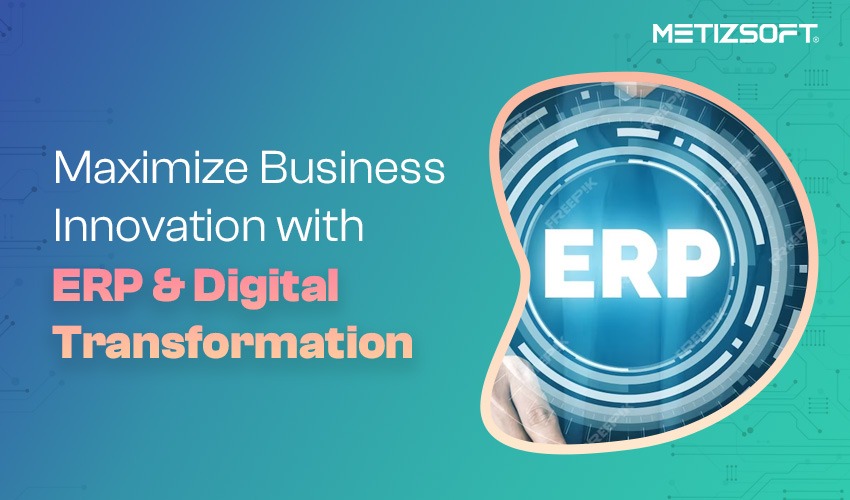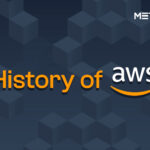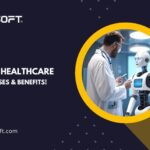
In a brand new, rapid enterprise scene, staying aggressive requires more than just keeping up with current trends. It needs a forward approach to include technological improvements, drive innovation, and foster growth. Therefore, Enterprise Resource Planning (ERP) systems and digital transformation have become practical tools to achieve these goals. This article explores how ERP and digital transformation meet to fuel business innovation and facilitate sustainable growth.
Table of Contents
Understanding ERP and Digital Transformation
1. Enterprise Resource Planning (ERP)
Definition and Purpose: Define ERP as an integrated software solution designed to smooth and automate core business processes. This includes finance, human resources, inventory control, and more.
Functional Modules: Discuss the main modules of ERP systems: finance, supply chain management, production, customer relationship management CRM Software, and commercial enterprise corporation intelligence.
Benefits of ERP: Furthermore, it highlights the benefits of implementing an ERP system, which incorporates improved operational efficiency, improved decision-making abilities, better resource usage, and standardized processes across the organization.
2. Digital Transformation
Conceptual Overview: Define virtual transformation as strategically leveraging virtual technology to modify commercial enterprise strategies, client reconnections, and fee propositions.
Core Technologies: Explore key virtual generation riding transformation, including cloud computing, data analytics, artificial intelligence (AI), machine learning (ML), Internet of Things (IoT), and robot process automation (RPA).
Objectives and Imperatives: Furthermore, discuss the primary goals of Digital Transformation, including increased agility, innovation, customer-centricity, operational excellence, and sustainable growth.
3. Intersection of ERP and Digital Transformation
ERP as a Digital Backbone: Position ERP structures as the virtual spine of businesses. It offers a centralized platform for statistics control, way automation, and manual choice.
Digital Enablers inside ERP: Modern ERP now includes virtual enablers, which provide for AI & ML, IoT, and analytics. Consequently, this improves predictive preservation, forecasting, customized marketing and advertising, and supply chain optimization.
Seamless Integration: Furthermore, emphasize the importance of seamlessly integrating ERP with other digital initiatives. This creates a unified environment that drives end-to-end automation, data-driven insights, and advanced customer experiences.
4. Driving Forces and Challenges
Market Forces: Let’s discuss the market forces pushing corporations toward ERP adoption and Digital Transformation. Specifically, these forces include evolving customer expectations, competitive pressures, regulatory compliance, and revolutionary change.ce, and revolutionary change.
Implementation Challenges: However, address common challenges encountered during ERP and Digital Transformation projects. These include legacy system integration, data migration complexities, organizational resistance to change, and knowledge gaps.
5. Strategic Considerations and Best Practices
Strategic Alignment: We should stress the significance of combining ERP and digital transformation strategies with organizational goals, culture, and corporate trends. Ultimately, this improves revenue growth and competitive advantage.
Change Management: Furthermore, advocate for robust change management procedures. These help simplify cultural shifts, reduce resistance, and foster a culture of continuous learning and adaptation.
Agile Approach: Lastly, I advocate adopting an agile approach for ERP implementation and digital transformation. This emphasizes repetitive development, influencer collaboration, and quick feedback loops.
The Role of ERP in Digital Transformation
1. Foundation of Digital Transformation
Define Digital Transformation: We need to establish particular statistics on Digital Transformation. This, in turn, emphasizes its role as the strategic integration of the digital era to revolutionize business processes, enhance customer experiences, and foster innovation.
ERP as a Cornerstone: Position ERP systems as foundational factors that underpin Digital Transformation tasks, serving as the spine for information integration, process automation, and organizational alignment.
2. Integration and Streamlining of Operations
Centralized Data Management: Highlight ERP’s capability to centralize information from disparate structures and departments, offering a single data supply for decision-making and analytics.
Standardization of Processes: Discuss how ERP streamlines and standardizes center corporation techniques at some stage in the organization, facilitating consistency, overall performance, and scalability.
Seamless Interdepartmental Communication: Illustrate how ERP fosters seamless conversation and collaboration amongst departments, breaking down silos and promoting skip-beneficial alignment.
3. Leveraging Data for Informed Decision-Making
Real-time Insights: We should emphasize ERP’s function in imparting real-time visibility into vital ordinary performance signs and symptoms (KPIs). Ultimately, this allows information-driven decision-making at all stages of the company.
Predictive Analytics: We will explore how ERP structures leverage advanced analytics and machine learning algorithms. Consequently, they generate predictive insights and enable proactive decision-making and strategic planning.
Business Intelligence Capabilities: Discuss ERP’s business enterprise intelligence abilities, such as dashboards, reporting tools, and ad hoc querying, empowering customers to extract actionable insights from widespread datasets.
4. Agility and Adaptability
Flexibility to Evolve: Highlight ERP’s flexibility to evolve to transform business requirements and market dynamics, helping organizational agility and responsiveness.
Scalability: Discuss how ERP structures can scale with the boom of the organization, accommodating accelerated transaction volumes, increasing product traces, and international growth.
Integration with Emerging Technologies: We need to explore how ERP structures integrate with the growing virtual era. This includes cloud computing, the Internet of Things (IoT), artificial intelligence (AI), and robotic process automation (RPA). Ultimately, this enhances agility and competitiveness.
5. Driving Innovation and Customer-centricity
Innovation Ecosystem: Illustrate how ERP fosters an innovation-friendly environment by supplying a platform for experimentation, collaboration, and non-stop improvement.
Enhanced Customer Experiences: Discuss how ERP contributes to delivering superior client experiences through custom-designed interactions, streamlined order fulfillment, and well-timed resource offerings.
Market Responsiveness: Highlight ERP’s function in allowing groups to reply quickly to market dispositions, customer remarks, and competitive pressures, fostering innovation and differentiation.
Driving Business Innovation through ERP and Digital Transformation
1. Data-Driven Decision Making
ERP’s Role in Data Management: Discuss how ERP systems are repositories for organizational data, supplying a centralized platform for records storage, integration, and evaluation.
Real-time Insights: Highlight ERP’s capacity to generate real-time insights into crucial commercial employer metrics, allowing knowledgeable decision-making and strategic plans.
Predictive Analytics: Explore how ERP structures leverage predictive analytics abilities to forecast market developments. Assume the patron’s desires. Apprehend possibilities for innovation.
2. Process Optimization and Automation
Streamlining Operations: Illustrate how ERP streamlines and standardizes the central organization processes, disposing of inefficiencies and redundancies obstructing innovation.
Automation: Discuss the function of automation in ERP structures, automating routine duties, lowering manual errors, and releasing assets for innovation-centered sports activities.
Continuous Improvement: Emphasize the significance of leveraging ERP facts to become privy to regions for improvement, fostering a way of life of everyday innovation and optimization.
3. Agile and Adaptive Operations
Flexibility and Scalability: Highlight ERP’s flexibility and scalability, permitting groups to adapt quickly to changing market conditions, customer demands, and technological upgrades.
Agile Methodologies: Explore how ERP structures aid agile methodologies, facilitating iterative improvement, rapid prototyping, and brief feedback responses, fostering innovation and agility.
Collaboration and Knowledge Sharing: Discuss how ERP promotes collaboration and understanding sharing across departments and groups, facilitating breakthrough innovation and creativity.
4. Integration with Emerging Technologies
Embracing Digital Innovations: Explore how ERP structures combine with rising digital technology in conjunction with artificial intelligence (AI), machine learning (ML), Internet of Things (IoT), and blockchain to energy innovation.
AI-pushed Insights: AI and ML algorithms, embedded within ERP structures, analyze large datasets. Thus, they identify actionable insights, fueling innovation. Consequently, this innovation impacts product development, marketing strategies, and customer experiences.
IoT-enabled Solutions: Illustrate how IoT sensors, when integrated with ERP structures, provide real-time data from connected devices. This enables several key benefits. It allows for predictive maintenance, supply chain optimization, and the creation of present-day product services.
5. Customer-Centric Innovation
Personalized Experiences: Furthermore, highlight ERP’s role in delivering personalized customer experiences. It leverages data insights to tailor products, services, and marketing messages to individual preferences.
Feedback Loop: Additionally, discuss how ERP systems capture customer feedback and sentiment. This allows businesses to iterate and innovate based on customer insights, ultimately improving satisfaction and loyalty.
Agile Customer Response: ERP’s capacity to enable agile and responsive customer support is crucial. It empowers businesses to address customer needs and resolve issues quickly. This fosters innovation and differentiation.
Future Trends and Considerations in ERP and Digital Transformation
1. Embracing Artificial Intelligence and Machine Learning
AI-pushed ERP Solutions: We need to discuss the growing integration of Artificial Intelligence (AI) and Machine Learning (ML) capabilities in modern ERP systems. Ultimately, this allows for advanced analytics, predictive insights, and the automation of routine tasks.
Intelligent Automation: Explore how AI-powered automation streamlines processes. It enhances decision-making and allows proactive responses to dynamic market conditions. This drives overall performance and innovation.
Personalized Experiences: Furthermore, highlight the role of AI in delivering customized customer experiences. This is achieved through targeted recommendations, tailored marketing campaigns, and predictive customer service interactions.
2. Integration with the Internet of Things (IoT) and Edge Computing
IoT-enabled ERP: Integrating ERP systems with Internet of Things (IoT) devices allows real-time data collection. This data, from sensors and connected devices, provides greater visibility, predictive safety, and supply chain optimization.
Edge Computing: Additionally, discuss adopting edge computing technology within ERP architectures. This enables data processing and analysis at the source, reducing latency. Ultimately, it allows faster decision-making in dispersed environments.
3. Blockchain for Enhanced Security and Transparency
Blockchain Integration: We will explore integrating blockchain technology within ERP structures. Consequently, this ensures data security, integrity, and transparency. Specifically, this applies to supply chains, financial transactions, and compliance processes.
Immutable Records: Crucially, highlight the advantages of blockchain’s immutable ledger. This provides for auditability, provenance tracking, and regulatory compliance. It also reduces fraud risks and enhances stakeholder agreement.
4. Cloud-local ERP Solutions
Cloud Adoption: Discuss the development of cloud-native ERP solutions. They offer scalability, flexibility, and standard price performance compared to on-premises deployments.
SaaS Models: Furthermore, explore the rise of Software as a Service (SaaS) ERP software. It will help provide organizations with the proper access to advanced skills, speedy deployment, and seamless updates. All this comes without requiring extensive IT infrastructure.
5. Cybersecurity and Data Privacy
Threat Landscape: We must address the evolving cybersecurity risk landscape. Therefore, implement strong security capabilities to defend ERP systems and sensitive data. Ultimately, this protects against cyberattacks, breaches, and compliance violations.
Regulatory Compliance: Highlight the importance of information privacy hints with GDPR, CCPA, and others. Moreover, the need for ERP structures to conform to those guidelines. It will help mitigate legal risks and protect customer attention.
6. Talent Development and Change Management
Upskilling Workforce: We must emphasize the importance of information development obligations to equip personnel to leverage the growing technology. Therefore, adapt to changing roles. Moreover, drive innovation in indoor ERP and Digital Transformation projects.
Change Management: Discuss the essential characteristics of change management in navigating organizational adjustments. Specifically, this includes addressing resistance to options and fostering a continuous learning and adaptation culture. Therefore, effective exchange management is crucial for organizational success.
Conclusion
As organizations navigate the complexities of a digital-first international, ERP structures coupled with digital transformation responsibilities function as catalysts for innovation and fuel a sustainable increase. Consequently, they are essential for success.
Moreover, businesses can position themselves for fulfillment in an ever-evolving marketplace by embracing their technology and its synergies. Ultimately, agility, overall performance, and purchaser-centricity are high importance in this environment. Partner with Metizsoft Solutions today if you are looking to drive ERP solutions into your existing business. Contact us today!
AboutChetan Sheladiya
Related Posts
What is CodeIgniter Framework, and How does It Works? Top Features and Benefits Explained!
The increasing demand for websites and apps has led to vast improvements in programming languages and frameworks. And why not?...
Tighten Your Security Before Your WordPress Site Get Hacked
WordPress is undoubtedly the most popular user-friendly blogging platform and CMS system, having an extensive plugin...

